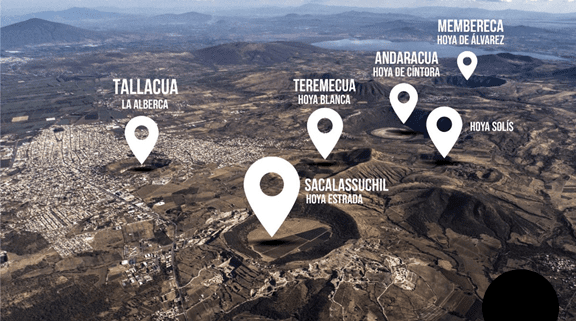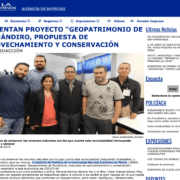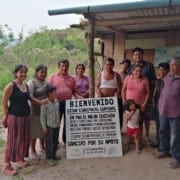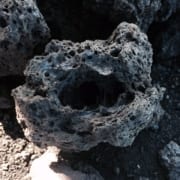THE SEVEN LUMINARIES. CRATERS BETWEEN VILLAGES.
In the valley of Santiago and belonging to the volcanic field of Michoacan are the volcanoes called the seven luminaries. The area called “Siete Luminarias” belonging to the Municipality of Valle de Santiago, presents unique physiographic characteristics in the State, consisting of a set of inactive volcanic craters, with low, abrupt edges and flat center of up to 1 km, in most cases; which are known as Hoyas de Santa Rosa, de Parangueo, San Nicolás, La Alberca, Cíntora, Estrada, Blanca, Álvarez and Solís. In some of these craters, there were water-forming lakes typical of maar-type volcanoes. Currently, in the area, some have no water, some quarries are altering the morphology of the tuff rings and public use presents difficulties of access and regulation.
What conservation in volcanoes is being promoted?
Restoring water in the craters, training communities and ejidos in the knowledge of the volcanoes, and taking the first steps to regulate quarries.
Objectives
- Long-term recovery of water in the craters.
- Prevent quarries from modifying the morphology of volcanic cones.
- To educate the local population on the geological values of volcanoes.
Actions
- Observe the evolution in the conservation of the volcanoes in the area.
- If possible, support a future community observatory of the volcano to promote its conservation.
- Volcano characterization plan.
- Training of communities and guides in volcanoes.
- Diagnosis of the community tourism promoted among the three communities of the volcano in partnership with Alba Sud.
- Restoration of trails and public use.
Expected results
- To conserve volcanoes, their geodiversity, and biodiversity.
- Improve the living conditions of the populations that coexist with Paricutin.












